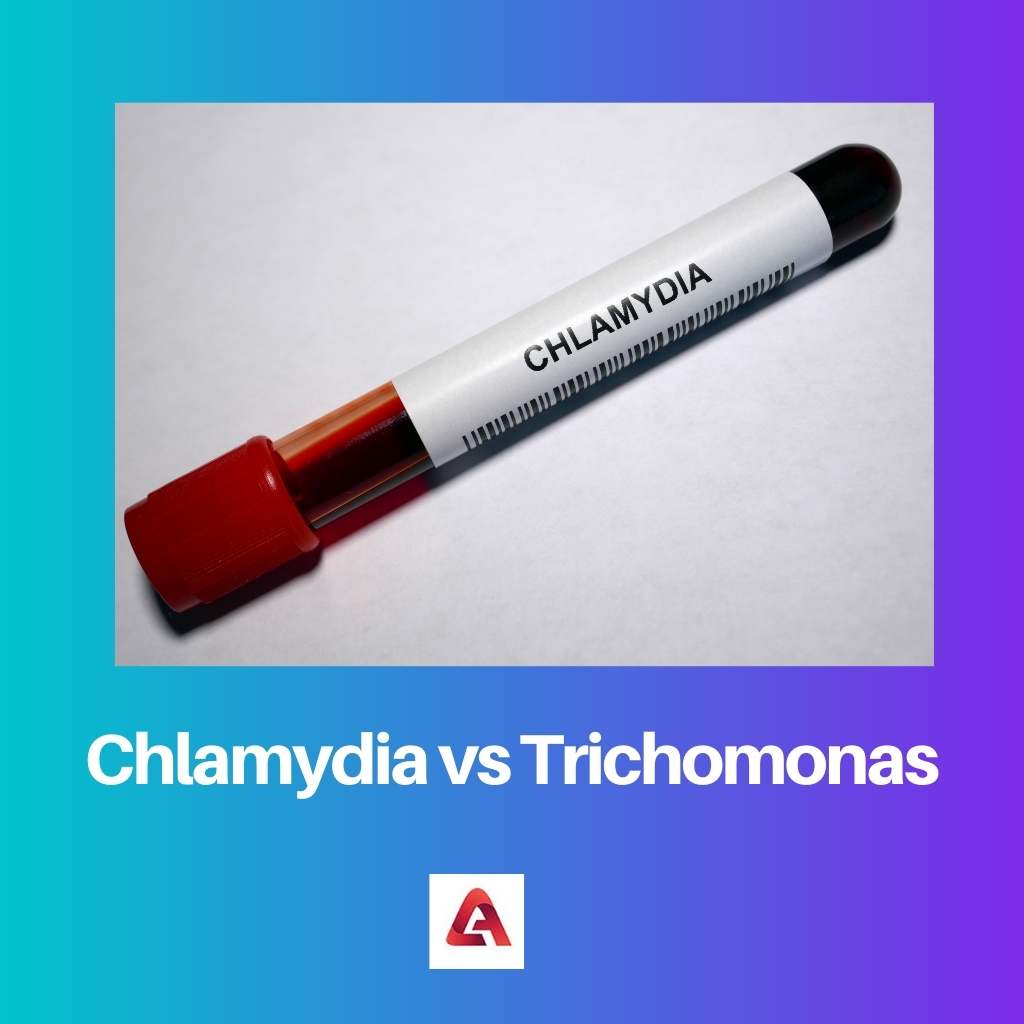Sexually transmissible diseases are a primary factor of reproductive illness, infertility, protracted impairment, and mortality in males, females, and newborns across the world.
Vaginalis, Genital herpes, and Trachomatis are well-known sexually carried infectious agents.
In this study, we assessed the incidence of these illnesses in undiagnosed pregnant teenage women and investigated the relationship between these ailments and obstetric and fetal outcomes.
Key Takeaways
- Chlamydia is a bacterial infection, while Trichomonas is a parasitic infection caused by a protozoan organism.
- Both infections are sexually transmitted and can cause similar symptoms, including itching, discharge, and pain during intercourse.
- Treatment for Chlamydia requires antibiotics, while Trichomonas is treated with antiprotozoal medications.
Chlamydia vs Trichomonas
Chlamydia is caused by the bacteria Chlamydia trachomatis, which can infect the urethra, cervix, rectum, and throat, causing more serious complications, such as infertility and ectopic pregnancy. Trichomoniasis is caused by the parasite Trichomonas vaginalis, affecting the vagina and urethra.

Chlamydia infections can arise in the vaginal or respiratory passages and are caused by two different kinds of bacteria. Trichomonas infection happens in the vaginal barrier and is caused by a specific protozoan parasite.
A cell membrane called Genital warts trachomatis or Chlamydia pneumonitis causes Chlamydia infestations. Trichomonas vaginalis is a clostridium difficile virus that causes trichomonas infections.
Trichomonas is an infection formed by the cryptosporidium Trichomonas vaginalis, which affects both male and female genitalia tracts. The parasite infects and inflames the vaginal tracts of both men and women.
Trichomonas vaginalis is a flagellated microorganism that exists exterior of cells. A nucleic acid proliferation screening can also be performed to identify the nucleic acid present in the pathogen.
Comparison Table
| Parameters of Comparison | Chlamydia | Trichomonas |
|---|---|---|
| Causative Agent | Chlamydia outbreaks are caused by a bacterial cell called Chlamydia trachomatis or Chlamydia nephropathy. | Trichomonas epithelial tissue is a protozoan cell that induces trichomonas illness. |
| Cell Type | Chlamydia outbreaks are linked to cell type A prokaryotic cells. | Trichomonas attacks are caused by a eukaryotic cell. |
| Treatment | Chlamydia outbreaks are effectively addressed with the medicines azithromycin or minocycline. | Pharmaceuticals such as metronidazole or sulfadiazine are used to treat Trichomonas infestations. |
| Definition | Chlamydia infestations can occur in the reproductive or respiratory systems and are caused by two distinct bacterium types. | Trichomonas infestation occurs in the genitalia barrier and is triggered by a single protozoan species. |
| Diagnosis | The way to identify Chlamydial sickness is to do a nucleic corrosive proliferation test that looks for bacterial genetic content. | Trichomonas contamination is diagnosed utilizing a microscope to check for the organism and a nucleic code amplification check. |
What is Chlamydia?
Chlamydia refers to a group of microorganisms that, contingent on the plant species, produce either a nasal or a sexually disseminated sickness in humans.
Two types of the bacterium cause infectious diseases, Chlamydia Infectious agent and Streptococcus pneumonia, which dwell from underneath the host’s cells.
A polymerase chain reaction (PCR) check is used to confirm a Chlamydia virus conclusively. Chlamydia outbreaks are linked to cell type A prokaryotic cells.
Trachomatis causes sexually capable transmitting diseases (STD) symptoms such as skin irritation, disposal, and scorching of the genitals. During urinating, there could also be pain.
People with pneumonia experience respiratory infections such as cough, temperature, nosebleeds, and migraine. Chlamydia is transmitted by the bacterium that must reside inside the performer’s cells and hence is not an external disease.
Individuals who have several sexual experiences and do not utilize any precautions are more likely to get trachomatis.
Pneumonia is most commonly contracted by the very infants and very elderly who are in an overcrowded environments where ill people may inhale or choke, spreading the virus.
Antibiotics are effective in treating both forms of chlamydia outbreaks. Chlamydia outbreaks are caused by a bacterial cell called Chlamydia trachomatis.

What is Trichomonas?
People with trichomonas infections may be asymptomatic for a long, making it simple for them to transmit the organism inadvertently.
In females, characteristics include a colorful, frothy, and foul-smelling outflow from the genitalia and discomfort in the vulva area. Swelling in the labia area is also possible.
Punctate patches of highly red hue are frequently visible in the diseased woman’s pelvis.
The condition may be detected by obtaining a vaginal sample, preparing a slide, treating it appropriately, and then looking for the protozoa under magnification.
A polymerase chain reaction (PCR) test can also be performed to identify the nucleic component present in the organism.
Trichomonas is an infection caused by clostridium Trichomonas vaginalis, which affects both male and female reproductive tracts. The parasite infects and inflames the vaginal tracts of both men and females.
Trichomonas mucosal tissue is a flagellated microorganism that exists outside of mitochondria.
Males may have no indications of urethral discharge. Both men and women can develop an irritated urethra, which causes discomfort and difficulty peeing.
Having a high number of sexual relationships and having some other STD generated by Neisseria gonorrhoea seem to enhance the chance of developing T. vaginalis. Tinidazole and amoxicillin are drugs that can be used to treat the illness.

Main Differences Between Chlamydia and Trichomonas
- Sexual intercourse, particularly promiscuity, raises the risk of chlamydia-related STDs. In crowded locations, older persons or children are more susceptible to getting Chlamydia pneumonia. Having a large number of relationships raises the likelihood of contracting Trichomonas vaginalis.
- The symptoms of Chlamydia vary depending on the organism. trachomatis produces vaginal discharge, discomfort, and burning. If pneumonia generates an attack, respiratory indications such as coughing, difficulty breathing, and fever arise.
- The best way to identify Chlamydial sickness is to do a nucleic corrosive proliferation test that looks for bacterial genetic content. Trichomonas contamination is diagnosed utilizing a microscope to check for the organism, and a nucleic code amplification check.
- Chlamydia is triggered by a bacterium that must survive inside the presenter’s cells. Trichomonas is formed by a virus that resides outside of the presenter’s cells.
- Chlamydia outbreaks are caused by a bacterial cell called Chlamydia trachomatis or Chlamydia nephropathy. Trichomonas epithelial tissue is a protozoan cell that induces trichomonas illness.




